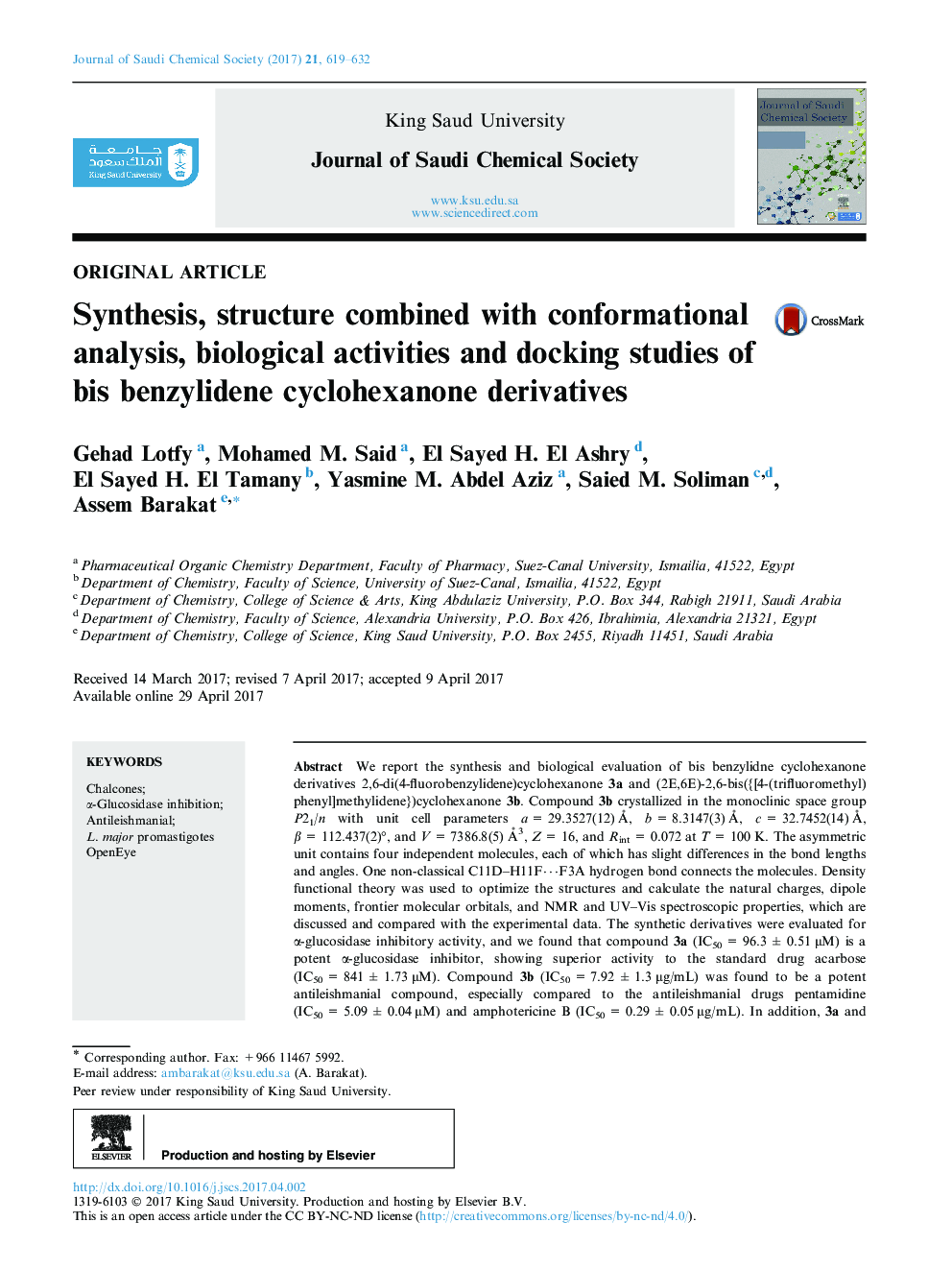| Article ID | Journal | Published Year | Pages | File Type |
|---|---|---|---|---|
| 4909312 | Journal of Saudi Chemical Society | 2017 | 14 Pages |
We report the synthesis and biological evaluation of bis benzylidne cyclohexanone derivatives 2,6-di(4-fluorobenzylidene)cyclohexanone 3a and (2E,6E)â2,6âbis({[4â(trifluoromethyl)phenyl]methylidene})cyclohexanone 3b. Compound 3b crystallized in the monoclinic space group P21/n with unit cell parameters a = 29.3527(12) à , b = 8.3147(3) à , c = 32.7452(14) à , β = 112.437(2)°, and V = 7386.8(5) à 3, Z = 16, and Rint = 0.072 at T = 100 K. The asymmetric unit contains four independent molecules, each of which has slight differences in the bond lengths and angles. One non-classical C11D-H11Fâ¯F3A hydrogen bond connects the molecules. Density functional theory was used to optimize the structures and calculate the natural charges, dipole moments, frontier molecular orbitals, and NMR and UV-Vis spectroscopic properties, which are discussed and compared with the experimental data. The synthetic derivatives were evaluated for α-glucosidase inhibitory activity, and we found that compound 3a (IC50 = 96.3 ± 0.51 μM) is a potent α-glucosidase inhibitor, showing superior activity to the standard drug acarbose (IC50 = 841 ± 1.73 μM). Compound 3b (IC50 = 7.92 ± 1.3 μg/mL) was found to be a potent antileishmanial compound, especially compared to the antileishmanial drugs pentamidine (IC50 = 5.09 ± 0.04 μM) and amphotericine B (IC50 = 0.29 ± 0.05 μg/mL). In addition, 3a and 3b have cytotoxic effects against PC3 (prostate cancer), HeLa (cervical cancer), and MCF-3 (breast cancer) cell lines. Docking study for compounds activity was performed with Openeye software in order to understanding their pose of interaction in the target receptors.
